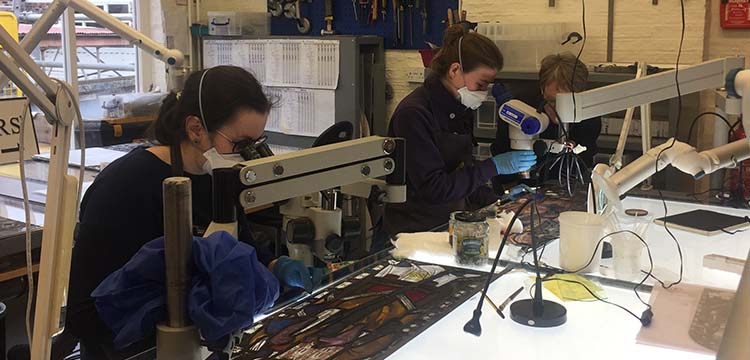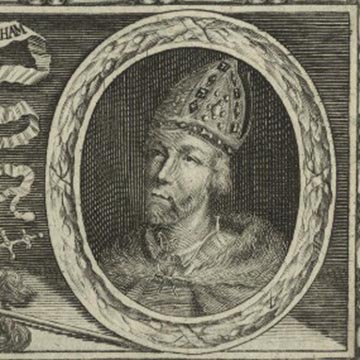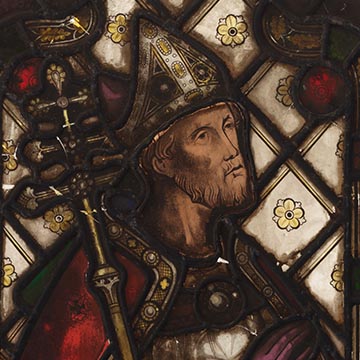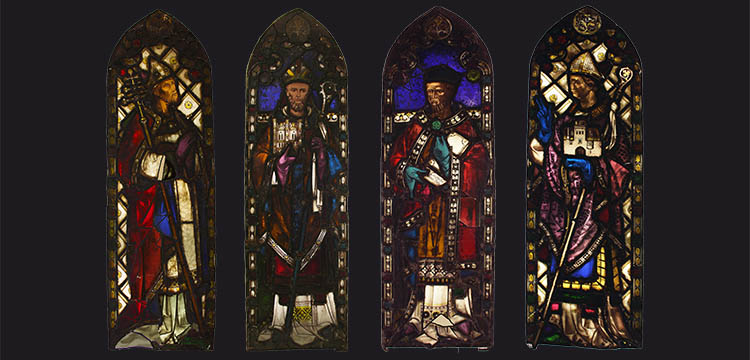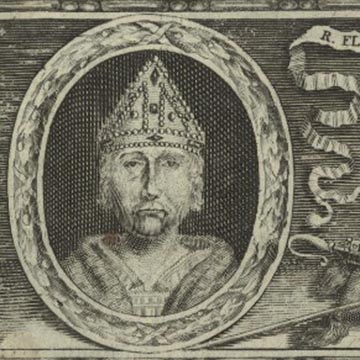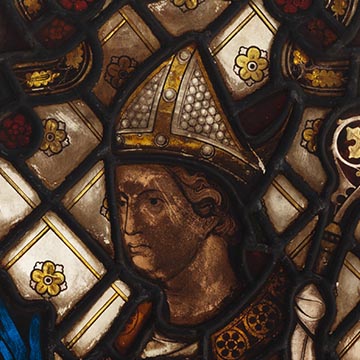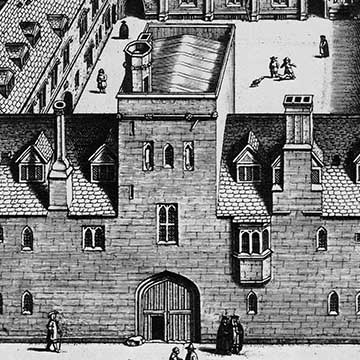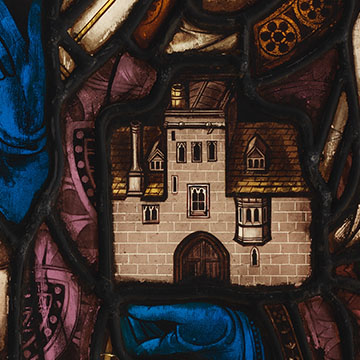Work Begins on Windows from Lincoln College, Oxford
June 2019
The YGT have begun work conserving a series of panels for the world renowned seat of learning, Lincoln College, Oxford. In April 2019 a team from the Trust were instructed to examine and safely store this glass, which had remained in long-term storage in an attic at the college since the 1990s. This stained glass had previously been installed in an oriel window in a fellow's room, adjacent to the college's chapel and overlooking Turl Street and the rector's garden. The glass was made in the nineteenth-century and conservators from YGT have discovered that they depict figures central to the foundation of Lincoln College.
Light a is that of Thomas Rotherham (1423-1500), Bishop of Lincoln (1472-1480) and Archbishop of York (1480-1500). In 1475 he completed the foundation of Lincoln College and also increased its endowment. His portrait (with primatial cross staff) hangs in the dining hall at the college, but this is his first and only depiction in stained glass. His general pose - hands clasped in prayer - reflects his positioning in many of the known portraits of Rotherham. The rendering of his facial features bears a strong resemblance to an eighteenth-century lithograph, which likely served as a direct source for the nineteenth-century glass-painters.
The figure in light b is less easy to identify. It depicts a standing bishop or an abbot holding a building that loosely resembles the tower over the cloister of Christ Church Cathedral, Oxford, where the bishop of Oxford has resided for centuries. If this is the case, the figure depicted in the glass can be associated with John Underhill (c.1545-1592), bishop of Oxford (1589-1592), or Nathaniel Crewe (1633-1721), bishop of Oxford (1671-1674). Both had served as rectors of Lincoln College.
Light c shows Edward Darby, archdeacon of Stow, Lincolnshire. The figure clasps a document inscribed 'Compositio Edwardi Darby'. A composition made in 1537 between Darby and the Bishop of Lincoln resulted in the formation of three fellowships at the college. The Darby Fellowship, established with the significant funds given to the college by Darby, is still awarded today. It is especially apt that he was depicted in the window, which occupied the openings in a room occupied by fellow's of the college, some of whom may have been Darby fellows. This is the only known depiction of Edward Darby in any medium. While the lights flanking this one contain oak leaf borders, Darby's is the only one to contain acorns; perhaps to signal that he is the focal point of the window.
The fourth light contains a standing figure of a bishop with crozier and mitre. He holds Lincoln College's gatehouse in one of his hands. This figure likely represents Richard Fleming (c.1385-1431), bishop of Lincoln (1420-1431), and original founder of Lincoln College in 1427. As with the depiction of Rotherham, the glass artists appear to have used the eighteenth-century lithograph of him as a model (where both Rotherham and Fleming appear jointly). For the rendering of the gatehouse, the painters have used David Loggan's Oxonia illustrata, compiled in 1675. The gatehouse had been remodelled, and so they could not have used the building itself as their guide.
TOP LEFT: Detail from eighteenth-century lithograph of Richard Fleming, artist unknown, NPG D24036; image kindly reproduced with permission from the National Portrait Gallery. TOP RIGHT: Detail of Fleming's face in the window; BOTTOM LEFT: Engraving of the college taken from David Loggan's Oxonia Illustrata, 1675; BOTTOM RIGHT: Detail of the Lincoln College gatehouse as shown in the window
Get In Touch
If you would like more information on our conservation services please get in touch.
Contact UsContact Us
The York Glaziers Trust, 6 Deangate, York, YO1 7JB

